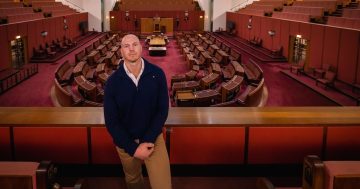
Frontline and full-time workers are experiencing rental stress as prices continue to rise. Photo: File.
As our cost-of-living crisis continues to bite, we’re seeing a new sector of people experiencing housing and rental stress: frontline and full-time workers.
It’s been estimated about 30,000 Canberrans are living in poverty, including 9000 children.
But ACT Council of Social Services (ACTCOSS) CEO Dr Emma Campbell said these people were just the tip of the vulnerable iceberg.
“Traditionally the [Councils of Social Services] have represented people on income support or specific disadvantage,” Dr Campbell said.
“But increasingly we’re actually representing people in full-time work, including people who work in the community sectors.
“If you’re in frontline work – in the disability or aged-care sector, and also hospitality and retail – there is not a single apartment that you can rent in the ACT that would prevent you from being in rental stress.”
Rental stress is defined as using more than 30 per cent of your income on rent.
ACTCOSS has been increasingly partnering with organisations such as the Hotels Association, Canberra Business Chamber, Master Builders, Master Plumbers and unions to try to find their workers an affordable place to rent.
“I’m not suggesting they’re vulnerable, but if we’re partnering with these types of organisations, it shows just how serious our [housing] crisis is,” Dr Campbell said.
“It impacts our whole economy.”
This cohort who can’t afford Canberra’s rentals is putting more stress on the Territory’s housing providers.
There are different types of housing – public, social, affordable, and then the private market.
Public housing is provided by the ACT Government, while social housing (sometimes referred to as community housing) can be provided by the ACT Government or community housing providers, where you pay a percentage of your income (usually 25 per cent). Affordable housing is at 75 per cent of the market rate.
Dr Campbell believed one issue that had caused Canberra’s current unavailability crisis was policy for community housing providers, which predominantly provide affordable housing.
“The thing about community housing providers is that they deliver very quickly, and they can also access funding from other sources … some have a social enterprise model where they build houses for the general market, and make profit from that to fund their other buildings,” she said.
“You have this model where you could quickly deliver much more affordable houses and rentals, which would help people in the low-paid sector, and that would take pressure off the private market and public housing.
“But the ACT Government refuses to provide any reasonable subsidy to help the community housing sector get over the line so that they can make the projects economically viable.”
YWCA Canberra CEO Frances Crimmins said she was also witnessing a growing number of people in rental stress.
She said as they weren’t eligible for welfare, they were being “condemned” to a “poverty trap” where they needed their situation to become even more dire to become eligible for support.
“If they fall behind one pay cycle, there is no safety net,” Ms Crimmins said.
“We need more houses and we need them now.”
In response, YWCA set up Rentwell, a charitable property management service whereby people could offer their homes as rentals at 75 per cent below the market rate and apply for a land tax exemption through the ACT Revenue Office, as well as receive a tax-deductible gift receipt (DGR) for the forgone rent.
“It’s not a silver bullet, but it’s another option,” Ms Crimmins said.
Since the scheme began three years ago, 75 properties have signed up.
Ms Crimmins said it was suitable for those who owned their property outright and wanted some extra income.
“But it has to be a property that could be just out of reach for someone. We couldn’t put somebody in a luxury property on the Kingston Foreshore but it could be a family home in Evatt,” she said.
“You don’t have to stick to the 75 per cent either; we have one property in Campbell where the owner wanted it to house refugees, so they rent it out at 30 per cent of the market rate.”
Ms Crimmins is looking at other innovative solutions, hoping to pitch them as viable options for our housing crisis.
“There’s a great organisation in WA called My Home, which is rapidly building pre-fabricated, well-designed homes which can be shipped anywhere,” she said.
“You could put that on government-owned land which has been marked for future development, but not earmarked for the next decade.
“What’s wrong with that option today rather than three years of waiting?”
While this could be a short-term solution, overall Ms Crimmins said everyone needed to come to the table to solve this “catastrophic” crisis.
“We knew this was coming and have not planned or responded, despite all the warning signs,” she said.
“If everyone in Australia said this was important, would the Government listen then?”


















